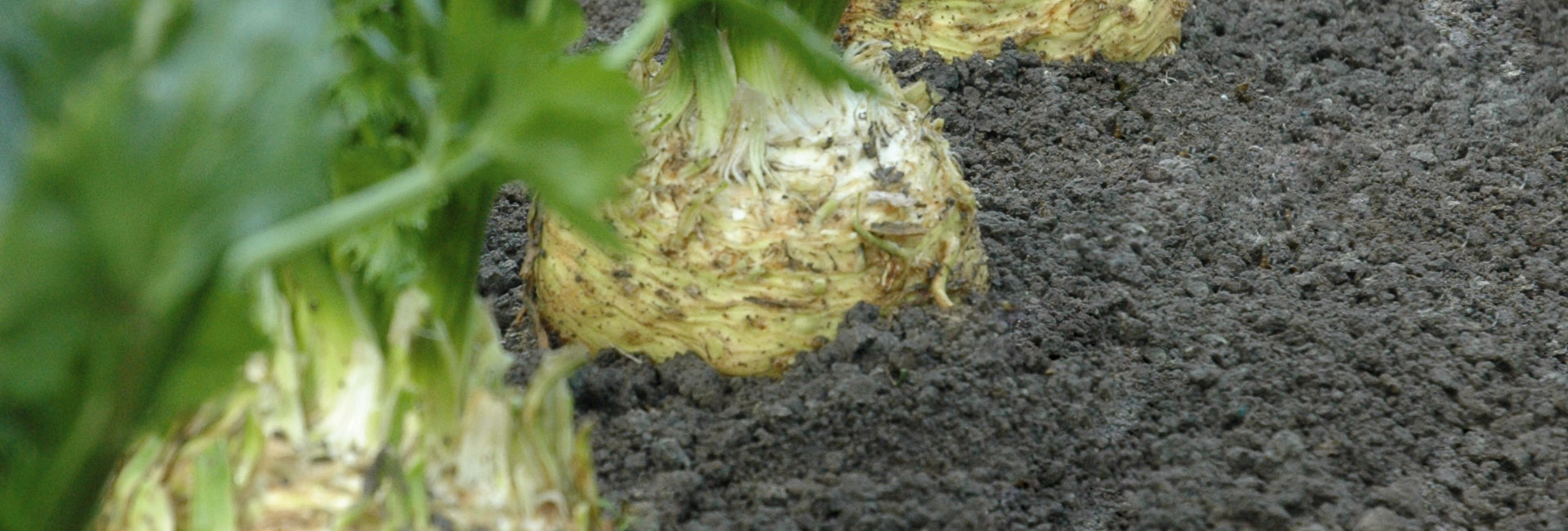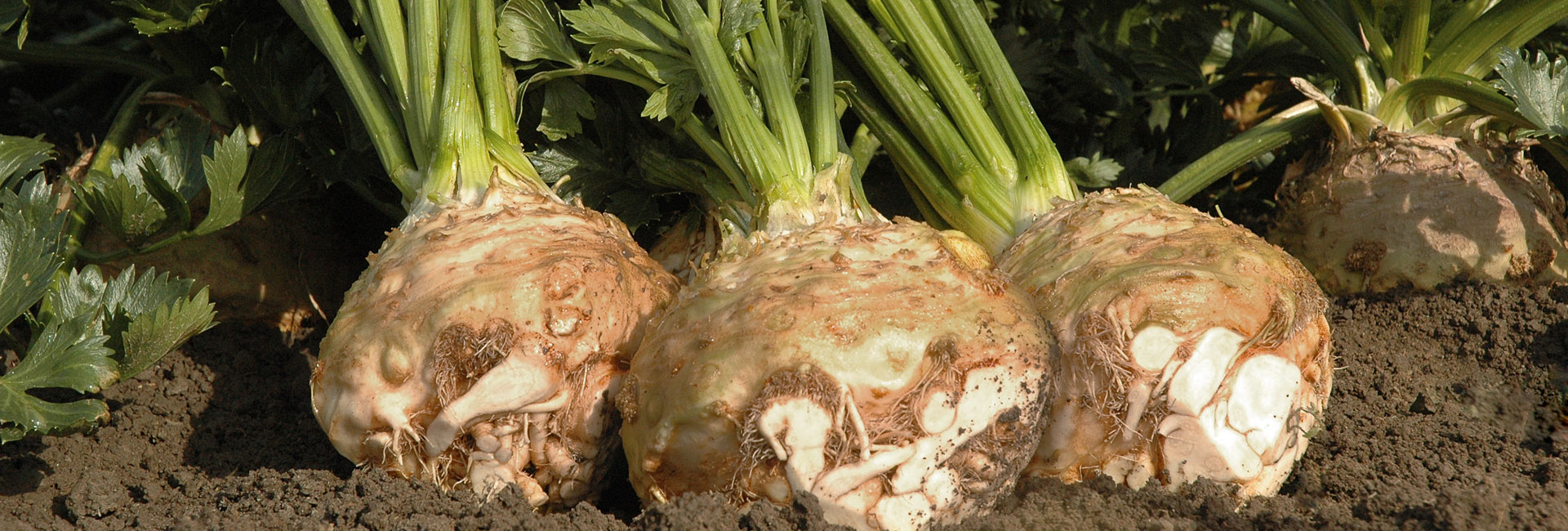Celery root
Van den Berge Handelsonderneming supplies celery root for industrial processing or fresh markets, brushed and/or washed:
Sizes |
|---|
| + 14 - 16 pieces |
| 10 - 12 pieces per 10 kg |
| 8 - 10 pieces per 10 kg |
| 6 - 8 pieces per 10 kg |
| 12 - 14 pieces per 10 kg |
Packaging units and Materials |
|---|
| 5kg; net bag, band bale or cardboard box |
| 10kg; net bag or band bale |
| 10kg; crate |
| 1,000kg; loose, in cardboard box |
| loose, on trucks |
Interesting facts
Celery root originated from the Mediterranean Basin but was also known in ancient China. Homer mentions it in his Odyssey and it was even found in the graves of Egyptian pharaohs. The ancient Egyptians, Greeks and Romans used the strong-smelling leaves and stems to neutralize dead body odour. Julius Caesar believed celery root brought good luck and would always bring some on his campaigns. In Italy, celery is first cultivated in the 16th century. By the end of the 17th century it has found its way into common culinary use in Northern Europe as well. Even today celery root is still applied in nature medicine, to stimulate kidney function and for its cleansing effect on the urinary tract. It is high in potassium which reduces high blood pressure. Celery root is a good natural source of fibre and iron which helps prevent anaemia.
cooking with celery root
go to www.smulweb.nl or www.devershoek.nl






